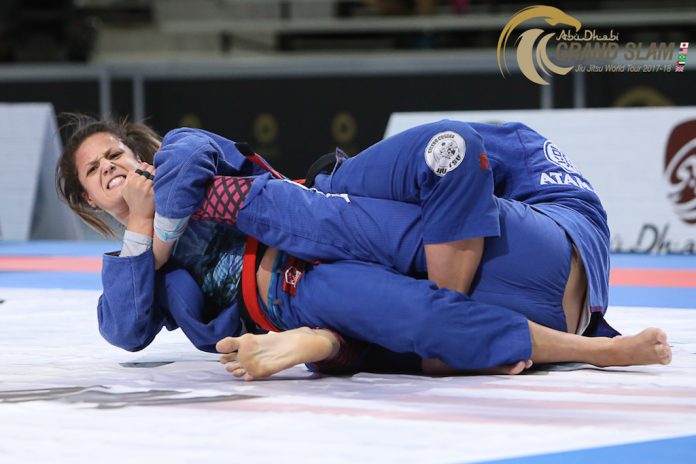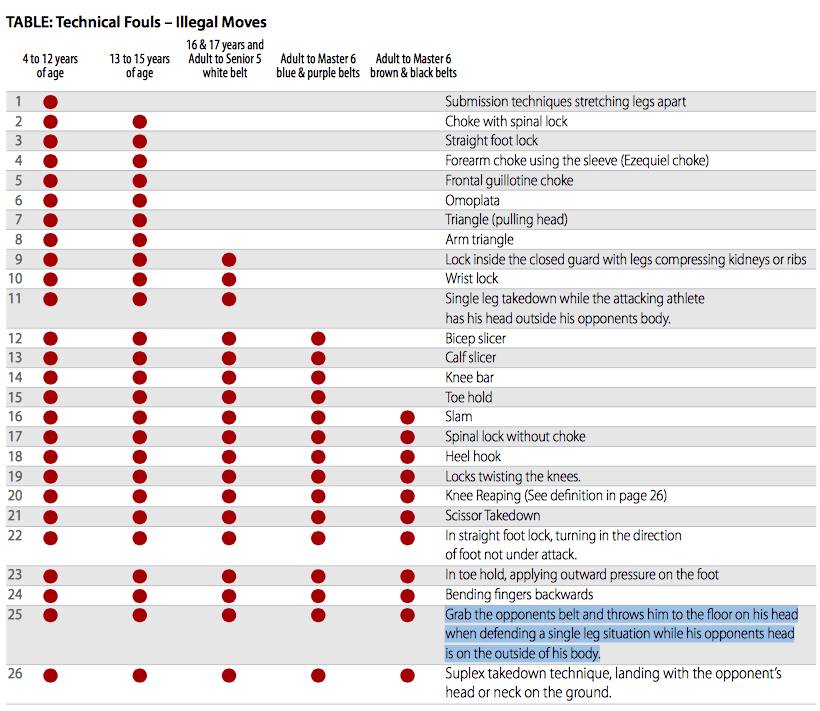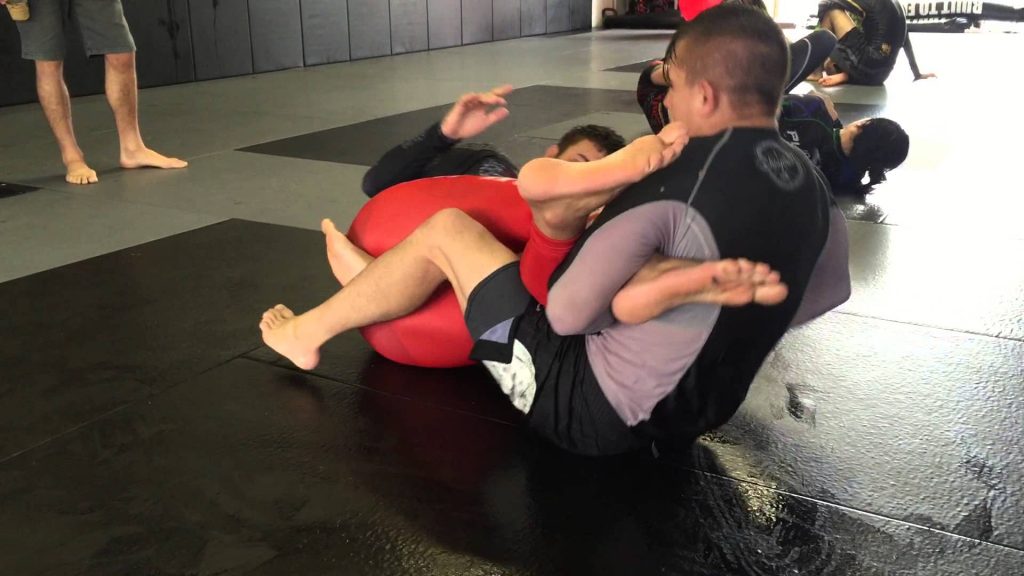
Until a few years ago, the BJJ world had a pretty much-unified stance on leg locks. As per the IBJJF, most were banned from competition up until very advanced levels. Furthermore, people thought that training them was a certain way of getting career-ending injuries. As the landscape of leg locking changed during the past few years, so did the perception people had of these submissions. In today’s modern Jiu-Jitsu, leg locks are considered to be as useful as some of the highest percentage moves, like the rear naked choke for example. However, under the IBJJF rules, which are the ones that “matter” the most, there are still legal leg locks, and those that even black belts cannot execute in competition.
If you like leg locks as much as the next person does, you need to know how to use them in competition. The thing is, most people training BJJ are not black belts, at least not yet. So, training competition legal leg locks requires a high level of understanding of both the rules and the submissions. Despite the rise of plenty of professional submissions only tournaments, the IBJJF still rules the competition stage in BJJ. And, as far as I am concerned, that is perfectly all right. they have the experience, resources, and infrastructure to put on huge BJJ competitions at the worldwide level. Furthermore, they manage to do it a few times a year. So, if you want to win the ultimate honors but you’re also a fan of heel hooks, you’ll need to adjust your game. After all, if Gordon Ryan can do it, why shouldn’t you?
AS with most things in Jiu-Jitsu, the first thing you need to know about IBJJF legal leg locks is what not to do. While some of the rules are as straightforward as possible, some remain hard to decipher for most. Some are actually so stuck in a grey zone that even IBJJF referees get confused. However, things are not that hard to actually understand. The next step in the process is knowing what you can do and when you can do it. Some leg locks still have the reputation of being too dangerous for beginners. However, there’s also the learning curve of leg locks, which is not a small one. So, understanding what lies ahead can let you plan accordingly and start training early.
Assessing The Current SItuation
The trouble most people have with the IBJJF rules is that they deem them to be too restrictive. The efficacy of heel hooks was never something people doubt, but training them in a safe manner was. Training heel hooks were never really at the level it is today. In turn, most leg lock submissions were mostly opportunistic techniques, not really finding their place amongst BJJ mainstays. Staying true to the Gracie ways, the IBJJF devised a ruleset that pretty much-outlawed leg locks in general. The result was that even legal leg locks were used very rarely, taking away a very useful tool for competitors.
On the other side, the IBJJF stance is that leg locks are dangerous, especially certain locks from certain positions. As the massive organization that it is, the IBJJF went on to devise a progressive ruleset concerning leg locks. To be fair, their basic system makes sense. The leg locks people get to do in the competition become more numerous as their belt rank rises. Also, certain positions open up for attacking “lower tiered leg locks” after getting to a certain belt level. It is a somewhat logical system that actually is pretty sensible.
The main issue with these two opposing forces in the BJJ world is lack of compromise. On one side, it is the submission only crowd, calming everyone should be allowed to do everything from the moment they step on the mats. On the other side, the IBJJF has an unmovable stance on legal and illegal leg locks. BWith both currents are unwilling to make changes in order to unify rules, the grappling community remains divided. So, you’ll need to know what you can do at your belt level in terms of lower body submissions.
IBJJF Legal Leg Locks Belt By Belt

Before you start looking into leg locks though, make sure you adopt a catch and release policy. Even though leg locks are not the boogeyman, training still requires safety. The best way to make sure you’re not even near an injury is to take caution when training. But, then again, this rule applies to every other aspect of training Jiu-Jitsu.
White Belt
As a beginner, you can go ahead and work with straight ankle locks as much as you want. The only condition here is that you are 16 years of age or older. The positions allowed for that are the straight AshiGarami, outside Ashi Garami and the 50/50 guard. Keep in mind that training straight ankle locks requires time and dedication, so spend enough time drilling the positions before you go for them in competition.
Blue And Purple Belt
Unfortunately, blue and purple belts do not get much more to do in terms of legal leg locks. Just like with white belts, they’re restricted to straight ankle locks form the same positions. A thing to consider is that you can’t go for an ankle lock if the leg you’re attacking is on top. So, when you go into the straight Ashi Garami, make sure you’re facing the leg you’re attacking. Also, try and avoid the 4/11 position until referees really clear up where it stands. Just remember to avoid ant submission that puts twisting pressure on the foot/ankle.
Brown And Black Belt
This is where things get interesting. Brown belt is the level where most legal leg locks are available. Apart from heel hooks, you can freely go for toe holds and knee bars in addition to straight ankle locks. The thing is that while attacks open, not man other positions are available to attack from. Knee raping remains forbidden despite belt level. One more submission that’s not on people’s minds often is the calf slicer. After the brown belt, you could go for calf slicers as much as you want, from any position possible. Which brings us to the most curious part of the IBJJF legal leg locks – the grey zones.

The Grey Zones
Now that it is clear what you can and can’t do at every belt level, let’s see what you might get away with. There are plenty of grey zones in the leg locking department, but two stand out more than others. Let’s take a look.
The one thing where most people (IBJJF referees included) end up confused is the Estima lock. While it was legal at all levels for a while there, I think now refers look at it as a toehold. This makes it legal only above the brown belt. The reason is that it places twisting pressure on the ankle, despite the difference in grips to the regular toehold. If you are a white belt, your best bet is to stay away from it. Like a blue or a purple belt, you might and try to get away with it, but I doubt plenty of referees are not ready for just such an occasion.

In terms of submissions, you can only attack the free leg. This means that you can’t even wrap your arm around the leg you have in a triangle. Furthermore, the only options you have on the other leg are a couple of straight ankle lock variations. Oh and forget about hitting the leg also submission.
DVD and DIGITAL Instructionals Related to IBJJF Legal Leg Locks :
IBJJF Legal Leg Attack Secrets by Dean Lister
IBJJF Legal Leg Attacks by Tiago Alves
High Percentage IBJJF Legal Footlocks by Mikey Musumeci
The Belly Down Footlock From Single Leg X by Tarik Hopstock
IBJJF Legal Footlocks by Jose Varella
https://bjj-world.com/leg-locks-ultimate-guide-positions-submissions/



![Darce Choke Encyclopedia – Origins, Mechanics and Variations [2025] BJJ, choke, Brabo, BJJ Darce Choke, D'arce Choke, Darce BJJ Choke](https://bjj-world.com/wp-content/uploads/2017/11/JungPoirierLeeYahoo-218x150.jpg)











![Jiu Jitsu During Pregnancy Brianna Battles DVD Review [2025] Jiu Jitsu During Pregnancy Brianna Battles DVD Review](https://bjj-world.com/wp-content/uploads/2025/12/jiu-jitsu-during-pregnancy-brianna-battles-dvd-review-218x150.png)

